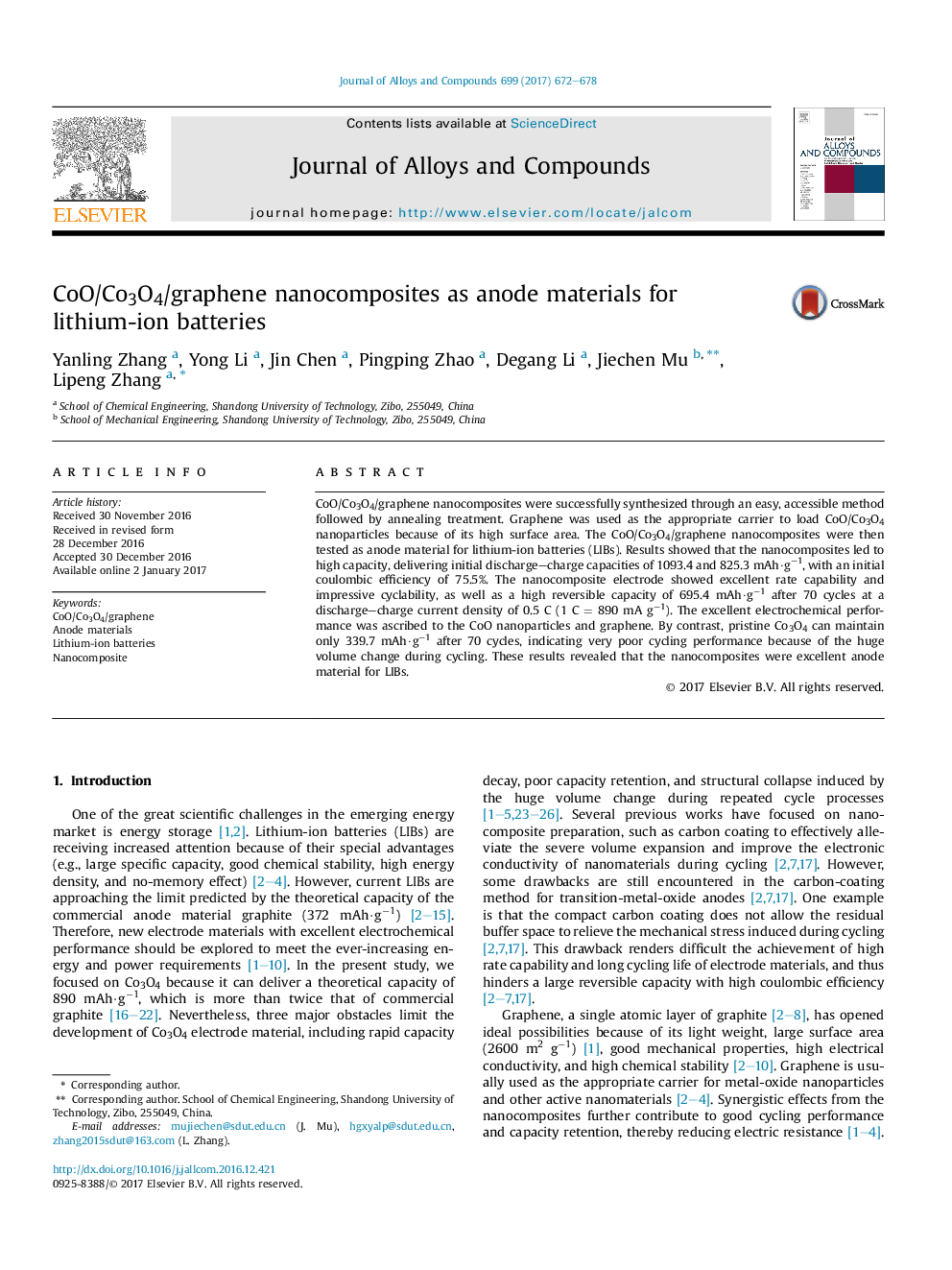| Article ID | Journal | Published Year | Pages | File Type |
|---|---|---|---|---|
| 5460593 | Journal of Alloys and Compounds | 2017 | 7 Pages |
Abstract
CoO/Co3O4/graphene nanocomposites were successfully synthesized through an easy, accessible method followed by annealing treatment. Graphene was used as the appropriate carrier to load CoO/Co3O4 nanoparticles because of its high surface area. The CoO/Co3O4/graphene nanocomposites were then tested as anode material for lithium-ion batteries (LIBs). Results showed that the nanocomposites led to high capacity, delivering initial discharge-charge capacities of 1093.4 and 825.3 mAh·gâ1, with an initial coulombic efficiency of 75.5%. The nanocomposite electrode showed excellent rate capability and impressive cyclability, as well as a high reversible capacity of 695.4 mAh·gâ1 after 70 cycles at a discharge-charge current density of 0.5 C (1 C = 890 mA gâ1). The excellent electrochemical performance was ascribed to the CoO nanoparticles and graphene. By contrast, pristine Co3O4 can maintain only 339.7 mAh·gâ1 after 70 cycles, indicating very poor cycling performance because of the huge volume change during cycling. These results revealed that the nanocomposites were excellent anode material for LIBs.
Related Topics
Physical Sciences and Engineering
Materials Science
Metals and Alloys
Authors
Yanling Zhang, Yong Li, Jin Chen, Pingping Zhao, Degang Li, Jiechen Mu, Lipeng Zhang,
